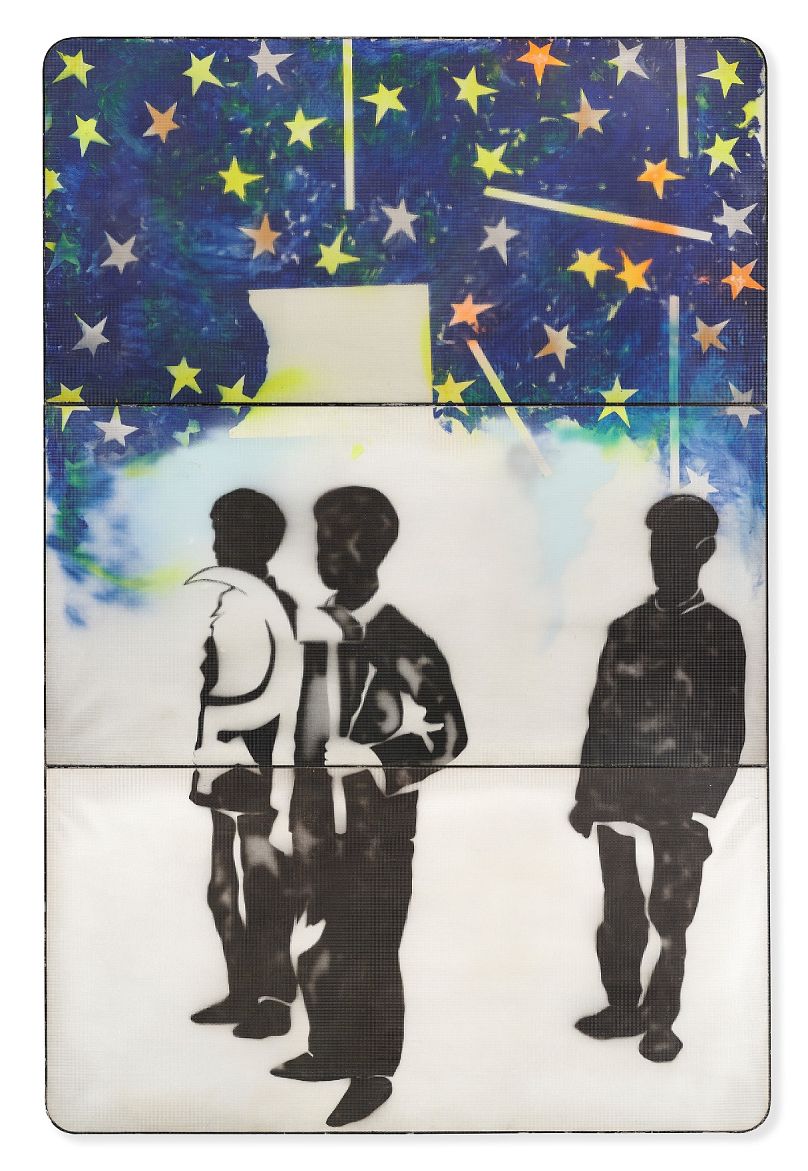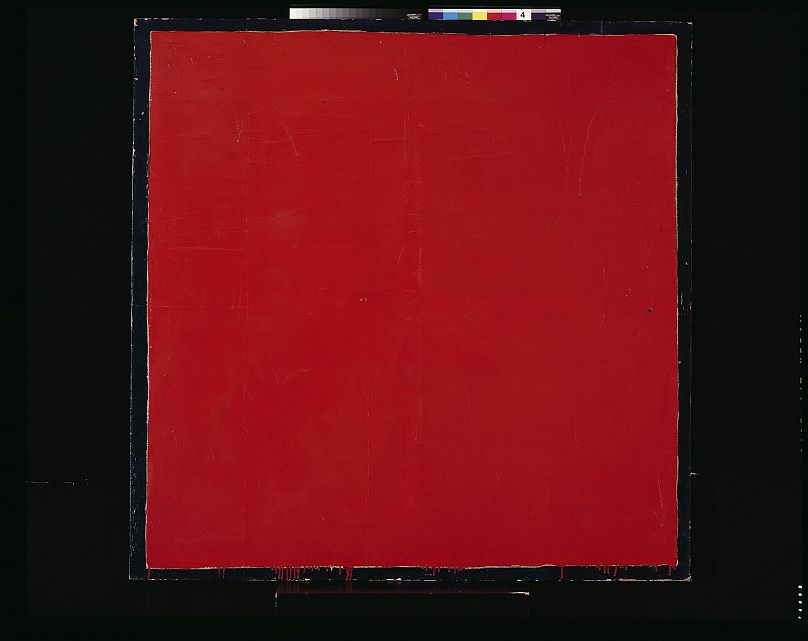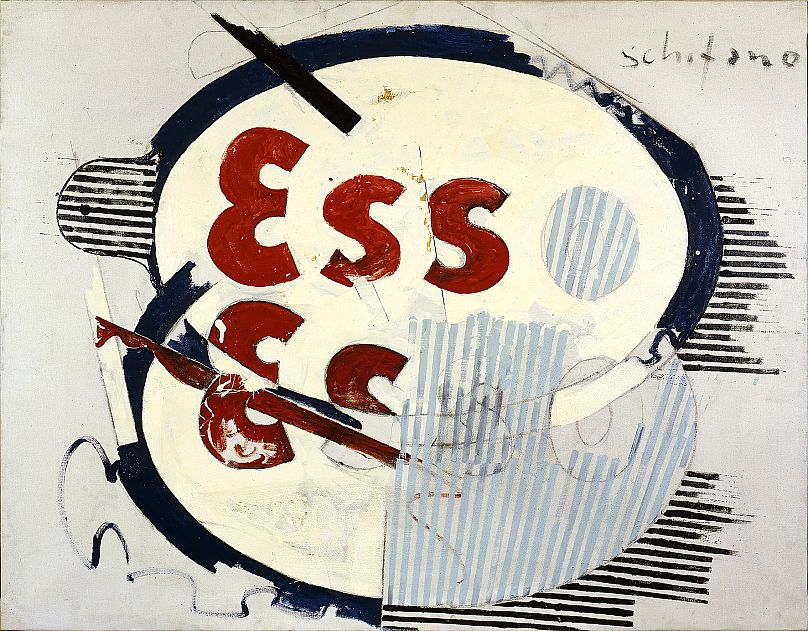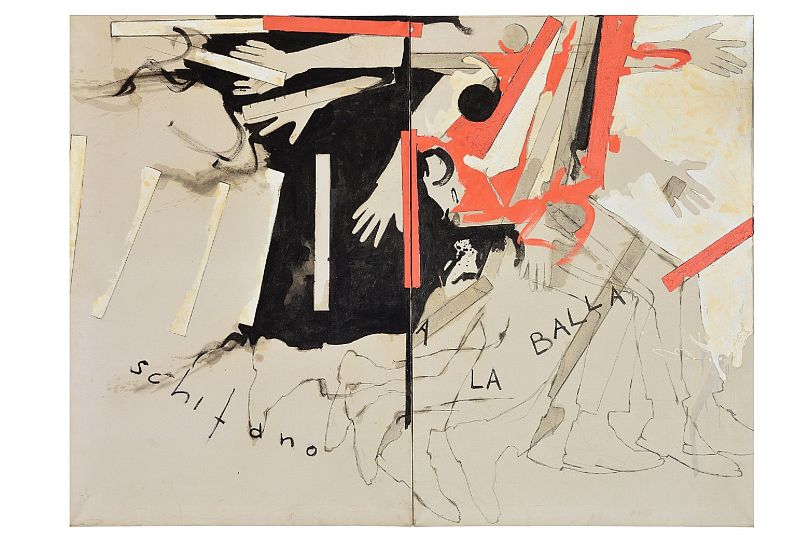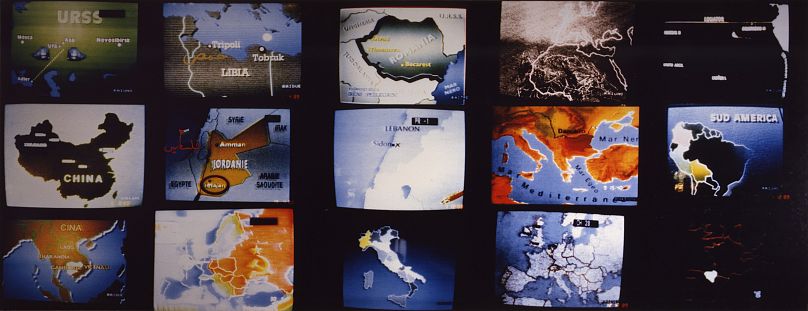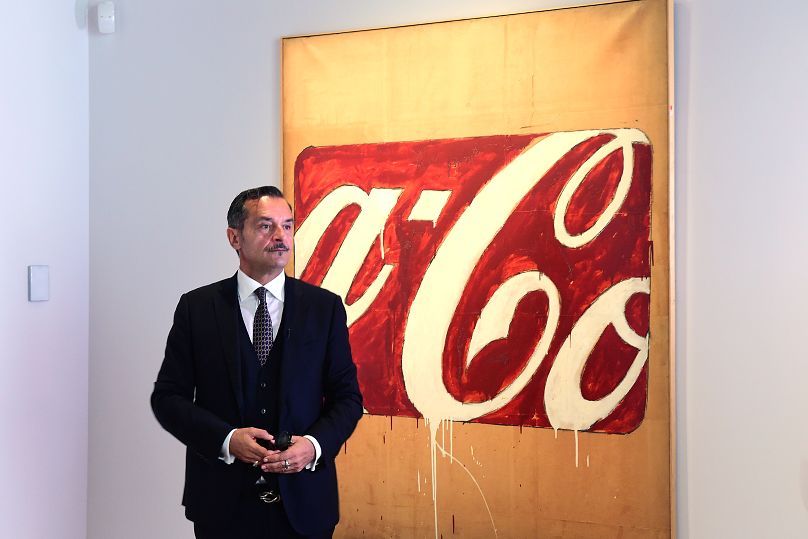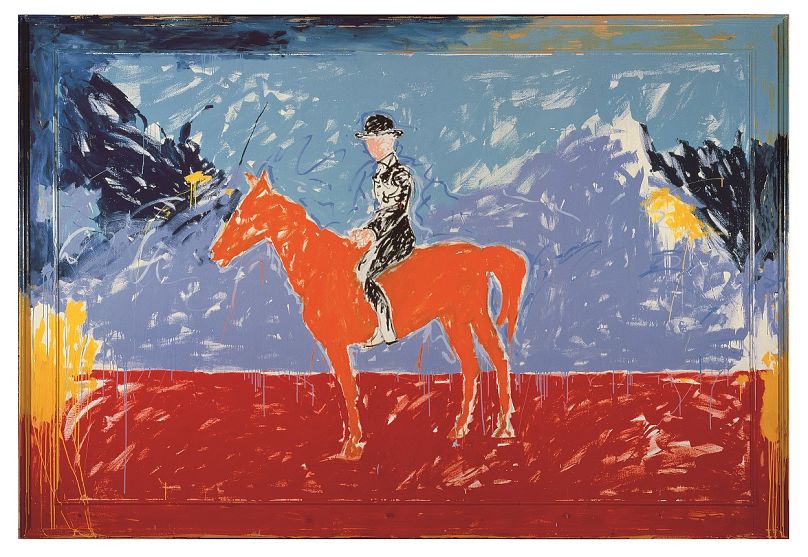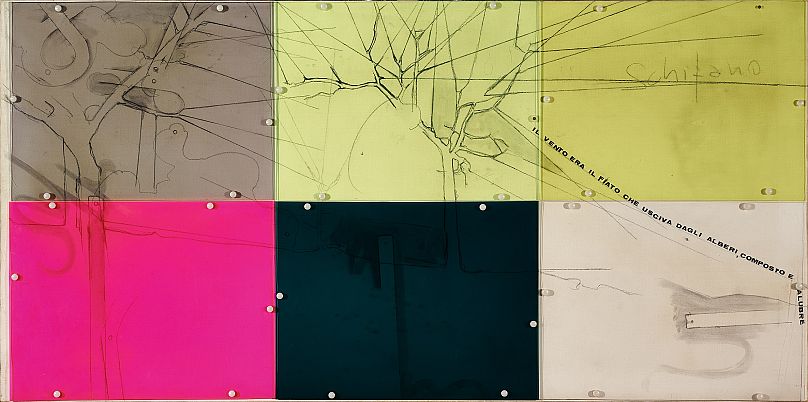The major exhibition of the Italian artist, often referred to as the 'cursed one' because of his battle against drug abuse and mental health issues, includes some never seen before items.
If you’re in Naples this year and want a break from the city's ongoing Serie A football title celebrations, you could do worse than to visit a new Mario Schifano retrospective at the Gallerie d’Italia.
Marking a year in the premises for the Gallery’s Naples venue, 'Il Nuovo Immaginario' - or ‘The New Imaginary’ - takes visitors on a chronological journey through the late artist’s oeuvre from the 1960s up until his death in 1998.
Put together by Luca Massimo Barbero, the associate curator for the Intesa Sanpaolo Collections of Modern and Contemporary Art, the exhibition features some 50 pieces gathered from collections across the globe.
Starting his career in the late 1950s, Schifano initially worked in a monochrome, dense style of painting, taking inspiration from his work as a restorer of ancient works in Rome’s Villa Giulia museum, under the direction of his father.
1961’s ‘Analogo’ is a perfect example of that artistic approach, but he soon became tired of the technique and as the Swinging Sixties swung in, rose to the status of one of the most significant and pre-eminent artists of Italian postmodernism.
In 1962, Schifano’s work was exhibited in the iconic ‘New Realists’ show at the Sidney Janis Gallery in New York, alongside other young Pop art and Nouveau réalisme innovators like Andy Warhol and Roy Lichtenstein.
In Italy, he was part of a core group of artists, including heavyweights Franco Angeli and Tano Festa, who made up the ‘Scuola di Piazza del Popolo’ in Rome. While Schifano was widely celebrated as a talented and prolific artist, he struggled with lifelong drug addiction and mental health issues, which earned him the nickname ‘maledetto’ - or ‘the cursed one’.
As the 1960s wore on, Schifano leaned more heavily into Pop Art, putting his own spin on the genre and reinterpreted America-centric signs - a long-time feature of his career - dedicating paintings to Esso and Coca Cola in a testament to urban living.
While the signs are a hallmark throughout much of the late artist’s work, he could not be put into any specific box. That fact is made plain by the exhibition’s inclusion of his take on great Italian landscapes, like ‘Last Autumn’ and ‘Futurism Revisited’, the latter of which pays tribute to the masters of the Futurism genre, including Giacomo Balla and Gino Severini who were among the first to introduce the theme of the movement of the human figure in artworks.
Despite not living until the 21st Century, some of the works featured suggest Schifano was way ahead of his time. A series of works from the 1970s - never before put on display to the public - called ‘TV Landscapes’ look very much like the home screen of a modern iphone in their resemblance to apps. The artist took inspiration from televised news stories, art and advertising and painted the photorealistic work on canvas.
Speaking to Euronews Culture, curator Luca Massimo Barbero explains the thinking behind the exhibition and the aim to clear up any myths surrounding the artist: “It’s important for us to shift the idea we as a collective public have of Mario Schifano. We want to clear the field of clichés that we associate with him. Like with every exhibition I curate, I always enjoy seeing the eyes of visitors light up - it seems like they are saying, ‘Ah, I didn’t know him like that’.”
The remarkable exhibition takes up a great deal of space across two floors at the stunning Gallerie d’Italia - which is owned by Intesa Sanpaolo and still acts in part as a home to bankers - and occupies the vast Toledo Hall, which features large-format works representing the last three decades of Mario Schifano's artistic production from the ‘70s, ‘80s and ‘90s.
1986’s ‘Gaston a Cavallo’ is a particular stand out. At first glance, it looks rather traditional with a man in a bowler hat sitting astride a horse - but it’s far from being a typical piece of art. Schifano also chose to paint the frame of the piece in a rainbow of colours, distinguishing his work from those artists that veer towards the more conventional.
Some of the works in the Toledo Hall have an interesting history aside from their artistic merit - many of them were saved from a fire and while damage is visible on a number of them, the scorch marks act as a metaphor for both the vitality of the work and also for Schifano’s life itself.
While no doubt a true rock star of the Italian art scene - he had high profile relationships with both Anita Pallenberg and Marianne Faithfull and was the inspiration for the Rolling Stones’ ‘Monkey Man’ and featured Keith Richards and Mick Jagger in his 1969 film ‘Umano, Non Umano - his life was not an easy one.
He was given six prison sentences, later struggling with heroin addiction; he would often pay his dealers in art, which frustrated gallerists no end. It took him several attempts at rehabilitation to throw himself back into his work and he reemerged in the 1980s with an important retrospective in Rome followed by a Venice Biennale show in 1982.
Schifano died in Rome in 1998 at the age of 63. At the time, many of those who knew him said they were surprised he had lived for so long.
The Gallerie d’Italia retrospective runs in Naples until 29 October 2023.












